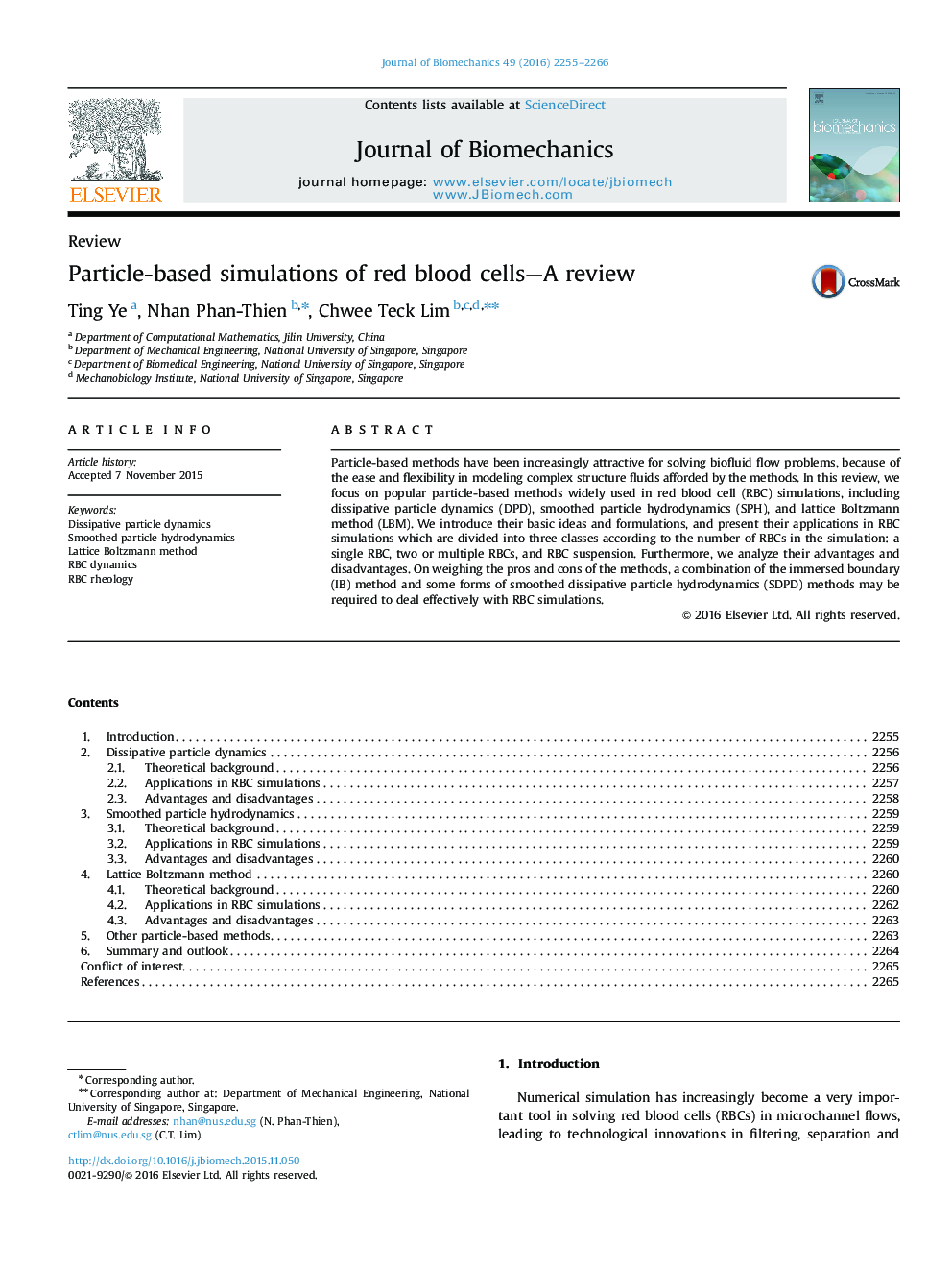| کد مقاله | کد نشریه | سال انتشار | مقاله انگلیسی | نسخه تمام متن |
|---|---|---|---|---|
| 5032381 | 1369982 | 2016 | 12 صفحه PDF | دانلود رایگان |
Particle-based methods have been increasingly attractive for solving biofluid flow problems, because of the ease and flexibility in modeling complex structure fluids afforded by the methods. In this review, we focus on popular particle-based methods widely used in red blood cell (RBC) simulations, including dissipative particle dynamics (DPD), smoothed particle hydrodynamics (SPH), and lattice Boltzmann method (LBM). We introduce their basic ideas and formulations, and present their applications in RBC simulations which are divided into three classes according to the number of RBCs in the simulation: a single RBC, two or multiple RBCs, and RBC suspension. Furthermore, we analyze their advantages and disadvantages. On weighing the pros and cons of the methods, a combination of the immersed boundary (IB) method and some forms of smoothed dissipative particle hydrodynamics (SDPD) methods may be required to deal effectively with RBC simulations.
Journal: Journal of Biomechanics - Volume 49, Issue 11, 26 July 2016, Pages 2255-2266
